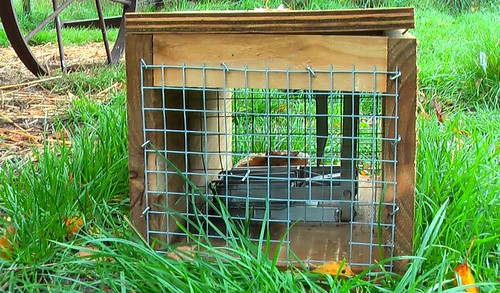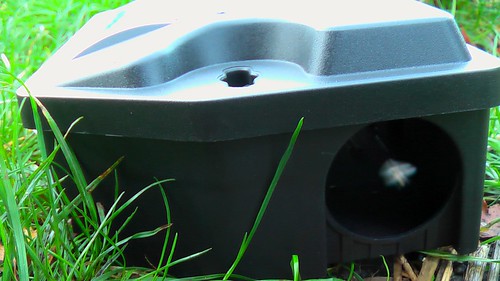Two years ago the New Zealand and Australian Governments
announced a faster, cheaper and more streamlined trans-Tasman process for securing patent rights in New Zealand and Australia. A single patent application and examination process for both countries, we were told, will remove duplication, drive efficiencies and reduce costs.
Further details of the plan have now emerged with the introduction into the Australian Parliament of the
Intellectual Property Laws Amendment Bill 2013. Here is my take on the main changes.
The Moonlighting Examiner
Patent examiners are in a privileged position when it comes to inventions. They get to see a lot of sensitive material before it is publicly available. In New Zealand we have
section 6(3) of the Patents Act 1953 that says:
[e]very officer and employee of the Patent Office commits an offence, and shall be liable on summary conviction to a fine not exceeding 20 pounds, if, outside the scope of his official duties, he drafts or prepares a specification or drawing or any part of a specification or drawing or makes a search of the records of the Patent Office for the use or information of any applicant or intending applicant for a patent under this Act.
The explanatory note says that the equivalent provision in Australia,
section 185, is outdated and no longer required. We are told that such conduct would breach the APS Code of Conduct in the Public Service Act 1999, and could be dealt with appropriately under that Act.
The Bill will remove the Australian provision. It will be interesting to see if similar changes are made to the New Zealand Act. It is not uncommon for New Zealand examiners to qualify as New Zealand patent attorneys while working at IPONZ. Some continue to work at IPONZ after qualification. Will we see New Zealand patent examiners moonlighting as patent attorneys?
The Electronic Mailbox
At the moment an address for service must be a physical or postal address in Australia, and the permitted means of service are by post or personal delivery to that address.
Revised section 221(1) will permit an address in Australia
or New Zealand to be an address for service of documents. Presumably a patent applicant will be able to maintain separate addresses in each country if that is what the applicant wants.
It looks like we will be sticking with post or personal delivery for now. But there is a specific provision to allow an electronic address to be an address for service in Australia or in New Zealand. New section 221(2) says that 'an address includes a reference to an electronic address'.
The question of whether a particular electronic address is in Australia or in New Zealand is to be 'determined in accordance with the regulations', according to new sections 221(3) and 221(4).
That will be an interesting one to watch.
The New Zealand Delegate
Patent examiners are usually referred to as 'examiners' for those of us in the profession and 'advisors' for those working at the Intellectual Property Office of New Zealand (
IPONZ). The Bill introduces a couple of new labels. A 'New Zealand patents official' administers New Zealand patent law. A 'New Zealand delegate' is a New Zealand patents official 'to whom the Australian Commissioner delegates powers and functions under the Patents Act'.
A patent examiner in his/her role as a New Zealand delegate will be able to examine Australian patent applications while resident in New Zealand. There will be some teething problems. The Bill contains some provisions to deal with these.
A New Zealand delegate must, if so required, exercise a delegated power or perform a delegated function under the direction or supervision of the Commissioner or an employee in the Patent Office specified in an instrument of delegation. This will ensure that New Zealand delegates can be given appropriate guidance by Australian patents officials.
There may also be situations where an error or omission by a New Zealand delegate of the Australian Commissioner causes a deadline to be overlooked. There are new subsections to permit the Australian Commissioner to extend the time for doing a relevant act if the relevant act or the error or omission took place in New Zealand.
Protection of New Zealand Delegates
New section 20(3) will give New Zealand examiners immunity from liability in case they mess up examination of an Australian patent application. The example given in the explanatory note is where:
a New Zealand delegate of the Australian Commissioner does not accept an application for grant of a patent when examining it, owing to a mistaken understanding of the invention being claimed. Later on, a Deputy Commissioner in Australia hears the applicant and accepts the application. The applicant is inconvenienced by the delay in the grant of the patent. It is immaterial that the New Zealand delegate‘s decision is made in New Zealand: the New Zealand delegate will have the same immunity in Australia as an Australian delegate.
I expect that this limitation of liability would apply equally where a New Zealand examiner has a mistaken understanding of Australian law and practice.
The One-Stop Shop
New section 214(2) will allow applicants to file 'prescribed documents' required for Australian patent applications with one of the specified New Zealand patents officials. This will save applicants having to file the same document in both Australia and New Zealand. One example given is where an applicant applies for grant of a patent for the same invention in each country.
There are time differences between the two countries. What time is an Australian document filed in New Zealand deemed to have been filed? All we know from new section 214(3) is that the time will be 'ascertained in accordance with the regulations'. There is a hint in the explanatory note that the time of filing an Australian document with the New Zealand patents officials will be deemed to be the time in Canberra, Australia.
Currency trading
New section 227(6) says that a fee required for an Australian patent or application can be paid in New Zealand currency to a New Zealand patents official instead. An example is where a patent applicant files both New Zealand and Australian patents with the New Zealand Commissioner. The applicant would be able to pay the New Zealand filing fee for the New Zealand patent application and 'the New Zealand dollar amount' of the Australian filing fee.
Similarly, there will be provisions for fees required for a New Zealand patent or patent application to be paid in Australian currency to IP Australia.
So how is the New Zealand dollar amount of an Australian fee, or the Australian dollar amount of a New Zealand fee, going to be calculated? Again, the details are being left to the regulations.
New section 226(7) says that 'the amount of the fee in New Zealand currency is to be ascertained in accordance with the regulations'. Senior officials in IP Australia and the New Zealand Ministry of Business Innovation & Employment are going to establish an instrument for setting these amounts.
What will probably happen is that
IP Australia will maintain a schedule of Australian fees and Australian dollar amounts of New Zealand fees.
IPONZ will maintain a schedule of New Zealand fees and New Zealand dollar amounts of Australian fees.
New Zealand and Australia have separate currencies with floating exchange rates that are independent of each other. I expect a few canny applicants will select the country in which they pay patent office fees based on the exchange rate of the day. Will this turn patent applicants into amateur currency traders?
Perhaps the proponents of this regime are right. Maybe it will reduce costs for applicants and other users of the patent system.
Further steps
The Bill that will enable this regime still needs to go through due Parliamentary process. Once through we should start seeing some regulations coming out of Australia setting out in more detail how this regime is going to work in practice.
In the meantime you can read
further details about the process, a less than complimentary
report on the proposed regime, and a
joint study by the Productivity Commissions of both countries.
 Some of our hens are disappearing. It's a hard one to measure. We don't know exactly how many hens we have. We think it is somewhere between 15 and 20. They are free range so we're never quite sure where they all are at any given time.
Some of our hens are disappearing. It's a hard one to measure. We don't know exactly how many hens we have. We think it is somewhere between 15 and 20. They are free range so we're never quite sure where they all are at any given time.
 Maybe it's a family of rats. It doesn't really matter whether they are norway rats or ship rats. They are all rats to us. We've set some poison bait in a bait station for those. The bait station is basically a housing that only a rat is small enough to enter. Apparently we need to avoid non-target animals.
Maybe it's a family of rats. It doesn't really matter whether they are norway rats or ship rats. They are all rats to us. We've set some poison bait in a bait station for those. The bait station is basically a housing that only a rat is small enough to enter. Apparently we need to avoid non-target animals. Or it could be a feral cat or possum. This is a little tricky. We have three domestic cats of our own. Surely it's not one of our own cats who are sneaking chickens?! I guess we'll find out soon enough. We've set a live cage trap that will catch and contain a feral cat, a possum, or one of our domestic moggies.
Or it could be a feral cat or possum. This is a little tricky. We have three domestic cats of our own. Surely it's not one of our own cats who are sneaking chickens?! I guess we'll find out soon enough. We've set a live cage trap that will catch and contain a feral cat, a possum, or one of our domestic moggies.

